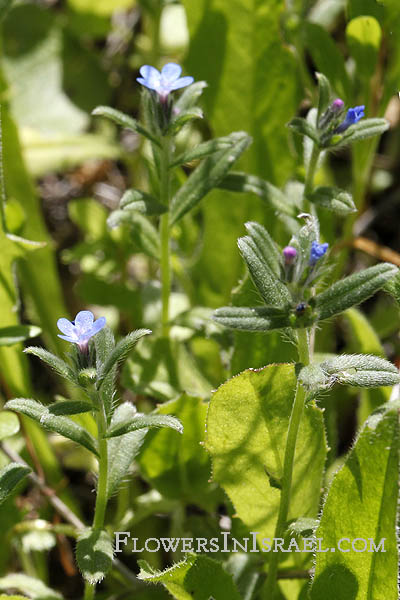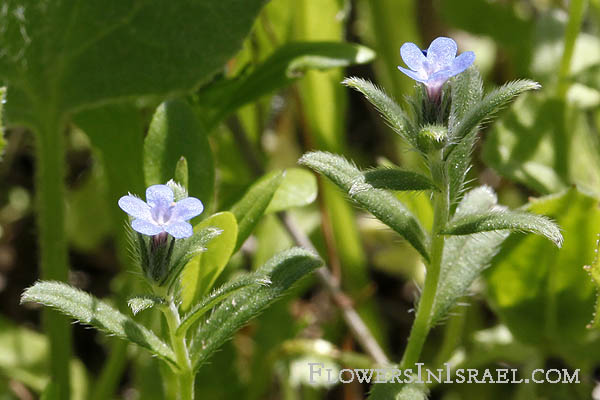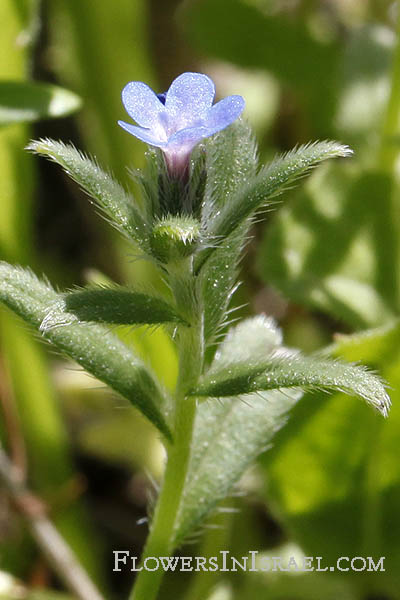Hebrew: גלעינית זעירת-פרחים
| Scientific name: | Buglossoides tenuiflora (L. fil) I.M.Johnston | |
| Synonym name: | Lithospermum tenuiflorum (L. fil) | |
| Common name: | Gromwell | |
| Hebrew name: | גלעינית זעירת-פרחים | |
| Plant Family: | Boraginaceae, זיפניים |

|
| Life form: | Therophyte, annual | |
| Stems: | ± robust, stem generally branched from the base | |
| Leaves: | Alternate, simple, smooth; calyx hairs yellowish | |
| Flowers: | Blue, white | |
| Fruits / pods: | Nutlets distinctly bigibbous | |
| Flowering Period: | February, March, April | |
| Habitat: | Shrub-steppes | |
| Distribution: | Mediterranean Woodlands and Shrublands, Semi-steppe shrublands, Shrub-steppes, Deserts and extreme deserts | |
| Chorotype: | Med - Irano-Turanian | |
| Summer shedding: | Ephemeral | |
| Protected Flower, צמח מוגן: | No |

Derivation of the botanical name: Buglossoides, Latin buglossos and Greek bouglossos (bous, ox and glossa, tongue); oides, resembling; refers to the shape and roughness of the leaves. tenuiflora, tenuis, thin, fine, slim, slender; florus, to bloom, to flower; slender flowered. Lithospermum , lithos, λιϑοϛ, stone; spermum, seeds; with very hard stonelike seeds. Cromwell, the classical name. tenuiflorum, as tenuiflora. The Hebrew name: גלעינית, galeinit, containing a stone.

|